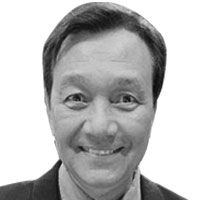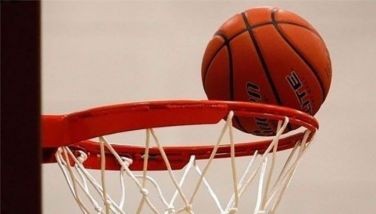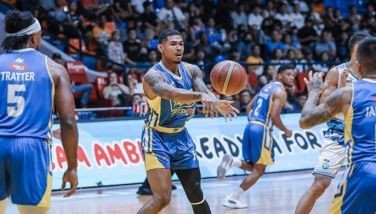Tragedy of Lydia and Del

Former Gintong Alay head Michael Keon, who once served as POC president and Ilocos Norte governor, is convinced that the problem in Philippine sports lies in the lack of a long-term vision that misguides those who plan and implement policies.
“Great athletes aren’t created overnight,” he says. “It takes years of planning and consistent scientific training to bring out the best in an athlete. But this doesn’t happen because of politics and interference. This was the real tragedy of both Lydia de Vega and Isidro del Prado because athletes of their potential and caliber come along only once in a generation.”
It was Keon who nurtured the careers of De Vega and Del Prado, the toast of Asian track in their prime in the 1980s. De Vega, now 51, bagged the gold in the 100-meter sprint at the 1982 and 1986 Asian Games, gaining the accolade as Asia’s fastest woman. Del Prado, now 56, was a two-time Olympian, a silver medalist at the 1986 Asian Games and a long-distance runner who dominated the Southeast Asian (SEA) Games in the 1980s. Now, for the first time ever and over 20 years after their ascendancy, Keon breaks his silence on what derailed De Vega and Del Prado from becoming possible Olympic medalists.
“My biggest regret pertains to Lydia and Del,” he says. “In 1980, when Lydia was only 16, she broke the Asian Games, SEA Games and Philippine national records in 400-M at the National Track and Field Championships with a time of 54.6 seconds,” he relates. “(Coach) Anthony Benson and I believed that Lydia’s performance was indicative of her world-class potential in this event. Lydia even stated for the record that ‘I’m not a sprinter, I’m more of a middle-distance runner.’ Of course, this wasn’t true. The 400 is an extended sprint. The 800, 1,500, 5,000 and 3,000-M steeplechase are considered the ‘middle distance events.’ What Lydia inferred was her preference for the 400 over the 100 and 200. Over time and with the continued interference of her father, Lydia began to resist training for the 400, insisting the training regimen was too harsh for her to handle. This was obviously not the case initially because she had no problem training for the 400 from the inception of Gintong Alay in late 1979 until she broke the records in May. She preferred to concentrate on the 100 and 200 which required less stressful training and less anaerobic workouts. Benson and I with the rest of the coaching staff and those most knowledgeable about the training of Gintong Alay, were unanimous in agreeing that if only Lydia had been allowed to train peacefully, unhindered and uninterrupted, she would have blossomed into a world-class 400 runner. She would’ve reached greater heights beyond just being the ‘Sprint Queen of Asia.’”
* * * *
Keon says De Vega could never have beaten the American, Jamaican and European sprinters in the 100 and 200. “Her innate sprinting ability was enough to propel her to be the champion of Asia, not beyond,” he adds. “However, in the 400, she had the potential to not only qualify for an Olympic medal but to win an Olympic medal, even possibly the gold and become the first Filipino Olympic gold medalist, something we have not achieved to this day.”
Keon continues, “At 16, Lydia ran 54.6 seconds. At the Olympic level, 50-51 seconds were and are enough to reach the Olympic final. A sub 50 second was and is enough to win a medal. The winning time of the 400 women’s Olympic event are as follows – 1980, 48.88 seconds; 1984, 48.83; 1988, 48.61; 1992, 48.83; 1996, 48.25 and 2000, 49.11. That’s why we believed that as Lydia grew older and matured both physically and mentally, she had the ability to run under 50. She had the God-given talent and physique coupled with the rigorous and scientific training of Gintong Alay to take 4 to 6 seconds off her time of 54.6 over a period from 4 to 8 years, 1980 to 1988. By 1988, Lydia would have only been 24. The same is true for Del. He also failed to live up to his enormous potential.”
Keon says Benson and he believed that Del Prado’s best event was ultimately, the 800, not the 400. “Del was an injury-prone athlete coupled with the fact that his coach from the Philippine Constabulary was always interfering,” he notes. “Del never really ran the 800 competitively after the 1981 SEA Games which was a great pity. The former Olympic and world record holder Sebastian Coe of Great Britain who set a world record for 800 of 1 minute, 41.73 seconds in 1980 only had a best time for 400 of 46.87 seconds compared to Del’s time of 45.61.
“If Del had continued running the 800, he would also have gone beyond the Asian level to the world level. Del had strong endurance and enjoyed going for 10 to 15k runs around Baguio City and coupled with speed, he had a sub 21 second 200, it isn’t hard to imagine that from 1981, when he ran his personal best of 1:48:78 in winning the SEA Games 800 to 1986 or a span of 5 years, he could’ve lowered his time by some 4 to 5 seconds, giving him a time in the 1:43 to 1:44 range. You can see that Del possessed the potential to be an Olympic medalist, even a gold medalist. The Olympic winning times were in 1980, 1:45:40; 1984, 1:43; 1988, 1:43:45 and 1992, 1:43:66.
* * * *
“Gintong Alay was not simply content to produce SEA and Asian champions. The long-term goal was to produce world champions.”
Keon says foreign coaches are helpful in developing elite athletes but doesn’t believe in foreign training. “If we want to upgrade the standards of Philippine sport, we must have a long-term program in which foreign coaches are brought into the country to oversee as many sports as possible,” he says. “In so doing, there should be a prolonged effort to upgrade the standards of coaching through constant seminars, workshops and on-site training. What we should do is to build a Philippine Institute of Sports patterned after the Australian model where not only athletes are trained but coaches as well.”
Keon says it’s preferable for athletes to train in their country where they’re familiar with the environment, language, culture and good. “I’m not saying we can’t send athletes to train overseas,” he qualifies. “This has been done many times and successfully, take the preparation for the 2005 SEA Games where many of our athletes trained overseas, specifically in China and Mongolia. However, this is still a stop-gap measure. To continually send athletes abroad for training simply shows that we lack faith in the ability and competence of our own coaches. Ideally, with proper home-grown coaching, only selected athletes for specific purposes would be sent overseas. The bulk of our athletes would train at home as was the case in Gintong Alay. We have to learn to become self-sufficient as a sporting nation.
“During Gintong Alay, we hired coaches in a number of sports. We did this because not only were the foreign coaches better qualified to train our athletes but because the foreign coaches could impart their knowledge directly to the Filipino coaches, thereby ensuring the transfer of skills, techniques and training methods. We would kill 2 birds with 1 stone, gaining world-class training for our athletes while at the same time, upgrading the standards of Filipino coaching. We could never have precipitated the resurgence in track and field without the initial presence of Anthony Benson.”
- Latest
- Trending






























